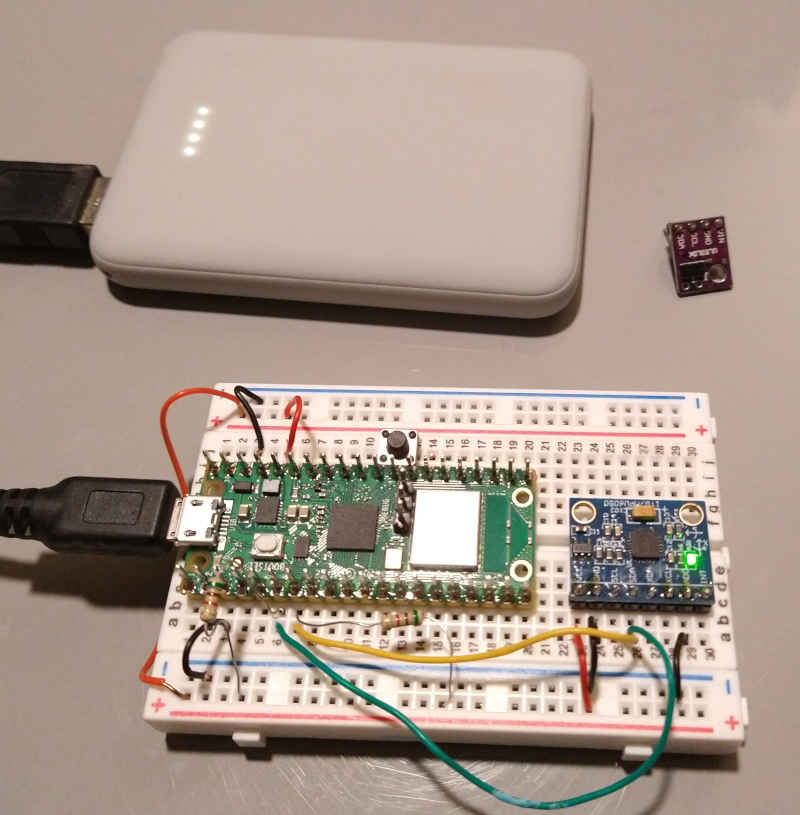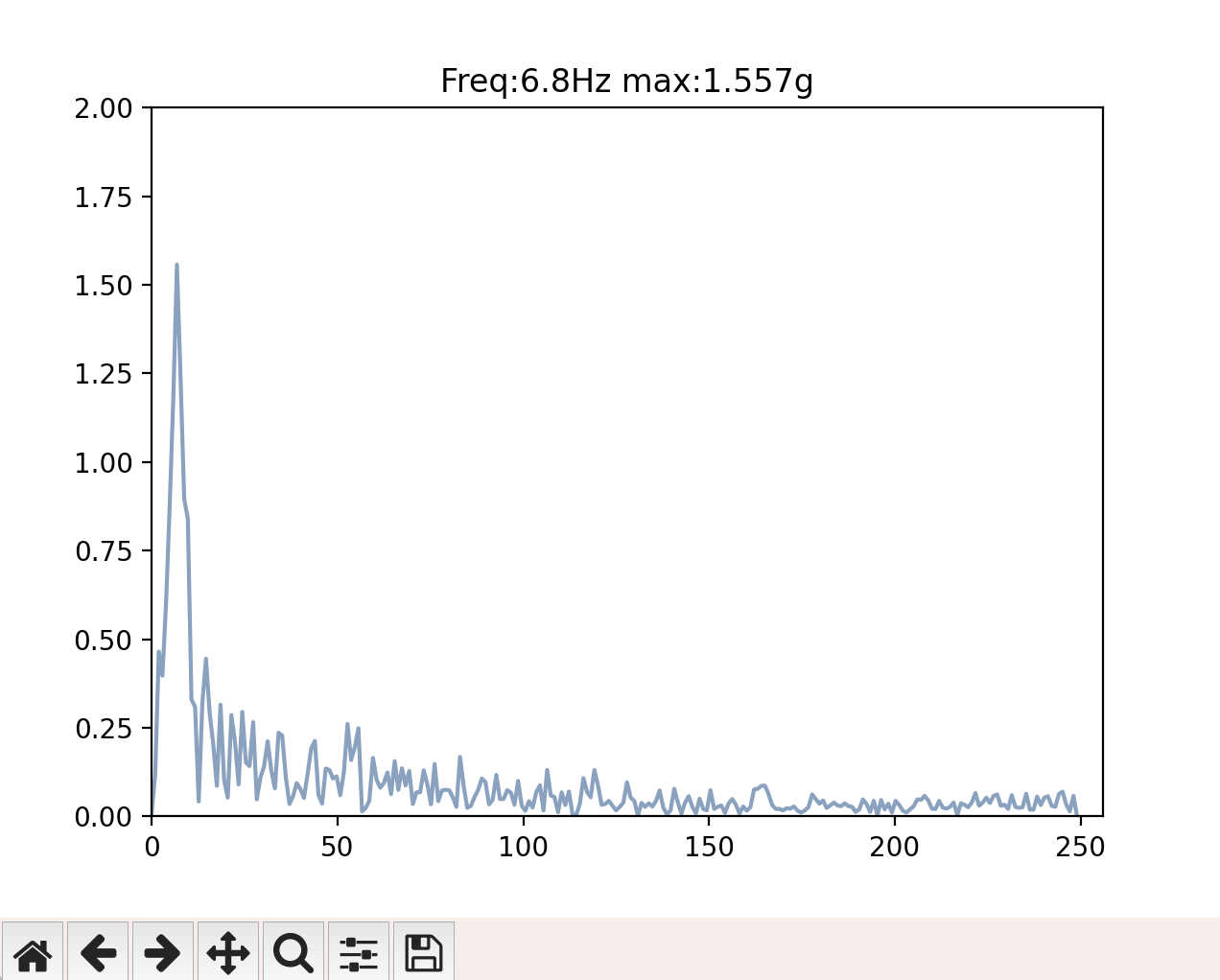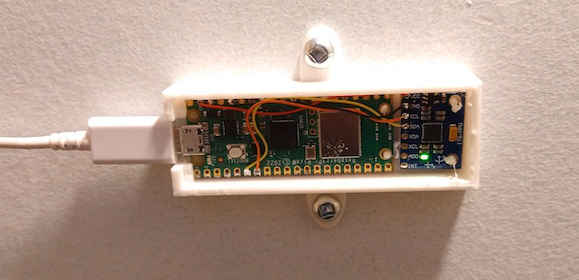


Using a Pico to detect if somebody goes up or down the stair
This is a proof of concept
Demonstration link to youtube.com https://youtu.be/534miBv5ut0
-
First trial
Use A MPU6050 to detect vibration on the stair.
I create the code using kiss FFT from https://github.com/AlexFWulff/awulff-pico-playground
The MPU6050 functions are base on the Pico-SDK. I don't use the fifo since it is only the accelerometer
I'm doing an 512 points FFT on 500 samples/sec by interleave of 256 samples. This way I do have faster response.
Folder mpu6050_udp. Use mpuPlot to display the spectrum.
you tube video
In conclusion.
Walking around the stair trigger the mpu6050 so it is hard to find a good threshold to discriminate.
The python script mpuPlot.py will received the data in UDP mode and display the chart.
The python library numpy and matplotlib need to be installed.
N.B. FSAMP and NSAMP in mpuPlot.py. should be the same as the mpu6050_udp.c
-
Second trial using optic. (pico_escalier)
This version doesn't use the mpu6050.
It uses an I.R. distance indicator check https://github.com/danjperron/VL53L0X_pico
folder pico_escalier. This is the current version using the VL53L0 sensor to turn Light ON/OFF via MQTT
you tube video (in french) -
Third and last trial ! Return back to mpu6050 and MQTT
Fix a bug in sampling rate and since this is only for the night walking around the stair is not an issue.
Two thresholds. The FFT peak threshold and the peak threshold before FFT
Folder mpu6050_mqttThe output data unit are now 1g = 10000. This was the best way to incorporate the +/- 2G input 16bits for the UDP. I Also add the NTP request for the date This is the mqtt command.
N.B. add-on Enable/Disable some frequency from the FFT index on Max Peak calculation.
/cmnd/escalier/delay -> delay to let the light ON.
/cmnd/escalier/threshold -> minimum Absolute detection to trigger the light.
/cmnd/escalier/peakthreshold -> minimum FFT peak detection to trigger the light.
/cmnd/escalier/info. -> request to output status.
/cmnd/escalier/enable. -> 0= no light 1= trigger light if threshold is reached.
/cmnd/escalier/calibrate -> calibrate accelerometer offset for 5 sec.
/cmnd/escalier/udpthreshold -> minimum FFT peak detection to trigger the udp transfer.
/cmnd/escalier/udphostip. -> specification of the IP address to post the UDP packet.
---- add-on possibility to enable/disable FFT output frequency for threshold calculation. By default is it set to all.
---- where x is the index of the FFT table. the MQTT message set x. in mqtt message specify which index or use 'all'.
/cmnd/escalier/getmask -> retreive FFT part index.
/cmnd/escalier/setmask -> enable FFT[x].
/cmnd/escalier/clrmask -> disable FFT[x].ex: using mosquitto to set udp host IP
mosquitto_pub -h "your broker IP" -t "cmnd/escalier/udphostip" -m "192.168.0.1". or -m "" to disable udp. -
How to compile
from the folder mpu6050_mqtt
mkdir build
cd build
cmake -DPICO_BOARD=pico_w -DWIFI_SSID="your essid" -DWIFI_PASSWORD="your password" ..
make
copy over the file mpu6050_mqtt.uf2 to the pico in flash mode
or use the SWD with openocd on a raspberry Pi
openocd -f interface/raspberrypi-swd.cfg -f target/rp2040.cfg -c "program mpu6050_mqtt.elf verify reset exit"
Don't forget to change the define. in the main file mpu6050_mqtt.c
#define FSAMP 250 Sample frequency of the mpu6050. The mpu6050 divider will use this (8000/FSAMP) -1
#define NSAMP 256 Number of sample points for FFT
The CMakeLists.txt file in pico-sdk/src/rp2_common/pico_lwip needs to be modified by adding after line # MQTT client filesadd_library(pico_lwip_mqtt INTERFACE) target_sources(pico_lwip_mqtt INTERFACE
${PICO_LWIP_PATH}/src/apps/mqtt/mqtt.c )*** About mpuPlot.py
The pico won't send udp data unless you set the IPV4 addres to send and the minimum threshold Use mosquitto_pub ex: mosquitto_pub -h "192.168.0.20" -t "cmnd/escalier/udphostip" -m "192.168.0.25" mosquitto_pub -h "192.168.0.20" -t "cmnd/escalier/udpthreshold" -m "20.0"
N.B. The mpuPlot won"t show any graph until a packet it receives. Also be sure that FSAMP and NSAMP(SAMP) are the same from the file mpu6050_i2c.h when you compile the code.